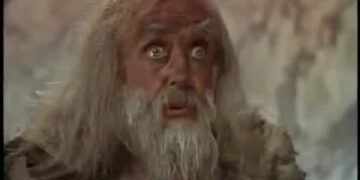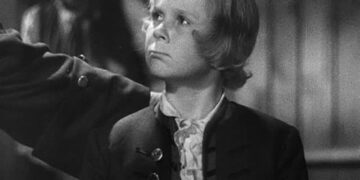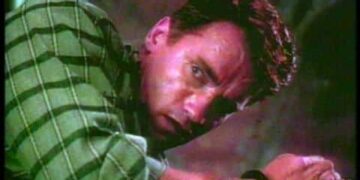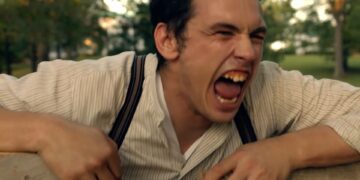Hello, fellow cinephiles and bibliophiles! Today we are diving deep into the world of Ferdinand (2017), a heartwarming tale of a bull with a big heart.
Directed by Carlos Saldanha and based on the book “The Story of Ferdinand” by Munro Leaf, the movie and book have captivated audiences worldwide. My aim is to provide an in-depth analysis of the book and movie, the characters, and the creators, along with some interesting curiosities.
Ferdinand’s story is an emotional roller coaster that takes us from the peaceful Spanish countryside to the heart of a bustling city, and finally to the bullfighting arena.
It’s a story that challenges our perceptions and stereotypes, showing us that there’s more to a person (or a bull, in this case) than meets the eye.
For those who are new to Ferdinand’s world, worry not!
This comprehensive guide will give you a rich understanding of the story, characters, and themes, whether you’re a parent wondering if the movie is suitable for your child, a book club member needing a detailed book summary, or a fan interested in cosplaying Ferdinand’s characters.
Who’s who in Ferdinand: Characters and their Significance
Ferdinand is filled with an array of vibrant characters, each with their unique traits and roles. First and foremost is Ferdinand himself, a gentle bull who prefers smelling flowers to fighting. His peaceful nature sets him apart from the rest and forms the crux of the story.
Lupe, the calming goat, is Ferdinand’s best friend and moral support.
Her quirky personality and unwavering support for Ferdinand adds a layer of humor and warmth to the story. Valiente, Guapo, and Bones are other bulls in the story, each showcasing different aspects of bull culture and society.
The human characters are just as important. From the kind Nina who shares Ferdinand’s love for peace to the villainous El Primero, a matador obsessed with his legacy, they all contribute to Ferdinand’s journey in their own way.
Book Summary: Understanding the Plot of Ferdinand
“The Story of Ferdinand” is a simple yet profound tale of a bull named Ferdinand. Unlike other bulls, Ferdinand is uninterested in bullfights and prefers to sit under his favorite cork tree, enjoying the fragrance of flowers.
His peaceful life takes a turn when he’s mistaken for a fierce bull and taken to fight in the bullring.
Despite the intense atmosphere and the matador’s provocations, Ferdinand stays true to his nature. He refuses to fight, choosing instead to sit in the ring and smell the flowers from the women’s hair.
The crowd is taken aback by this display of calmness and Ferdinand is eventually taken back to his beloved cork tree, where he continues to live peacefully.
This book, penned by Munro Leaf and beautifully illustrated by Robert Lawson, is a timeless story of being true to oneself. Its simplicity, combined with its powerful message, has made it a favorite amongst children and adults alike.
Movie Summary: The Story of Ferdinand on Screen
In 2017, Ferdinand’s story was brought to life on the big screen by Carlos Saldanha. The movie stays true to the spirit of the book while adding its own twists and turns.
Ferdinand, the peace-loving bull, is voiced by John Cena, whose performance adds depth to the character.
The movie starts with Ferdinand’s peaceful life in the Spanish countryside, where he lives with his loving human companion, Nina.
However, a series of unfortunate events lead him to be mistaken for a fierce fighting bull and he’s taken to a different place, away from his home and Nina.
The movie follows Ferdinand’s journey as he navigates this new world, meets new friends, and eventually finds himself in the bullfighting arena facing El Primero.
Despite the pressure and danger, Ferdinand stays true to himself, refusing to fight and proving that you don’t need to fight to be a hero.
Differences Between the Book and the Movie
While the movie retains the central theme of the book, it introduces several new characters and subplots to make the story more engaging for the audience.
The movie delves deeper into Ferdinand’s character, his relationship with other characters, and his life before being taken to the bullfighting arena. The character of Lupe, the calming goat, is a movie addition and she plays a significant role in the plot.
The movie also explores the world of bullfighting in more detail, showing the training of the bulls and the preparation for the fights. The climax in the movie is more dramatic, with Ferdinand standing up to El Primero in the ring.
Despite these differences, both the book and the movie beautifully convey the message of being true to oneself and challenging societal expectations.
Munro Leaf and Robert Lawson: The Creators of Ferdinand
“The Story of Ferdinand” was penned by Munro Leaf and illustrated by Robert Lawson. The book was published in 1936 and has since been translated into over 60 languages. Leaf’s simple yet powerful writing and Lawson’s charming illustrations have touched the hearts of millions worldwide.
Leaf was an American author of children’s literature known for his ability to convey profound messages through simple stories.
Lawson, on the other hand, was a skilled illustrator who brought Leaf’s stories to life through his detailed drawings. Their collaboration resulted in one of the most beloved children’s books of all time.
Despite the controversy surrounding the book during its initial release (it was banned in several countries for being “pacifist propaganda”), “The Story of Ferdinand” has stood the test of time and continues to inspire readers today.
The Soundtrack of Ferdinand by John Powell
The soundtrack of Ferdinand, composed by John Powell, is as enchanting as the story itself. Powell’s music beautifully captures the essence of the movie, from the serene moments of Ferdinand enjoying the flowers to the intense scenes in the bullfighting arena.
The soundtrack features a blend of traditional Spanish music and contemporary tunes, reflecting the movie’s setting and modern storytelling. Songs like “Home” by Nick Jonas and “Lay Your Head On Me” by Juanes add a touch of pop to the soundtrack.
Powell’s score plays a crucial role in conveying the movie’s emotions and themes, making it an integral part of the Ferdinand experience.
Parent Guide: What to Know Before Watching Ferdinand with Your Children
Ferdinand is a family-friendly movie suitable for children of all ages. The movie’s themes of peace, friendship, and being true to oneself are conveyed through engaging storytelling and lovable characters.
However, parents should note that the movie does contain scenes of bullfighting, which may be intense for some children. These scenes are handled sensitively, focusing on Ferdinand’s pacifist stance rather than the violence of the sport.
Before watching the movie, it might be beneficial to discuss with your children Ferdinand’s story and the real-world issue of bullfighting. This can help them better understand and appreciate the movie’s message.
When and Where Ferdinand Takes Place: The Setting and Film Locations
Ferdinand is set in Spain, a country known for its vibrant culture and tradition of bullfighting. The story takes us from the peaceful countryside, where Ferdinand lives under his favorite cork tree, to the bustling city where the bullfighting arena is located.
The lush landscapes, charming rural houses, and grand bullfighting arena depicted in the movie capture the beauty and diversity of Spain. The movie’s animation, done by Blue Sky Studios, brings this setting to life, immersing the audience in Ferdinand’s world.
While the movie was not filmed in actual locations (as it’s an animated film), it accurately represents the Spanish setting, contributing to the authenticity of the story.
Curiosities and Lesser-known Facts About Ferdinand
Ferdinand’s story is filled with interesting tidbits and lesser-known facts. For instance, did you know that “The Story of Ferdinand” was published just months before the outbreak of the Spanish Civil War and was seen by many as a pacifist symbol?
Another interesting fact is that the book was one of the first children’s books (if not the first) to use a full-color printing process, something that was very innovative for its time.
As for the movie, it took nearly six years to make, from the initial concept to the final cut. The character of Ferdinand was designed to be lovable and relatable, with animators studying real bulls to create realistic movements and expressions.
Dress Like Characters: Tips for Ferdinand Cosplay
Ferdinand’s characters are not only lovable but also have distinctive looks that make them perfect for cosplay. To dress up like Ferdinand, you’ll need a brown outfit and a pair of bull horns. Don’t forget the flowers, Ferdinand’s favorite!
For Lupe, a white and grey outfit, a pair of goat horns, and a red scarf will do the trick. If you’re planning to cosplay Nina, a simple dress, a headband, and a stuffed toy bull would be perfect.
For the more adventurous, dressing up like El Primero with his matador outfit could be a fun challenge. Remember, the key to a successful cosplay is not just the outfit but also embodying the character’s traits and attitude!
The Ending of Ferdinand Explained
The ending of Ferdinand, both in the book and the movie, is a triumph of pacifism and individuality. In the book, Ferdinand refuses to fight in the bullring and is eventually taken back to his peaceful life under the cork tree.
In the movie, after a tense showdown with El Primero, Ferdinand wins the crowd’s heart with his peaceful stance. He is pardoned by El Primero and allowed to return home to Nina.
The ending reinforces the story’s message of staying true to oneself. Ferdinand’s victory is not achieved through violence or aggression but through his steadfastness and refusal to conform to society’s expectations.
Sequel, Remake, and Spin-off: The Legacy of Ferdinand
The legacy of Ferdinand extends beyond the book and the movie. Over the years, Ferdinand’s story has been adapted into various forms, including a short animated film by Disney in 1938 which won an Academy Award.
While there hasn’t been a sequel or a spin-off to the 2017 movie, Ferdinand continues to inspire and entertain audiences worldwide. The film was nominated for an Academy Award for Best Animated Feature and has received positive reviews for its animation, storytelling, and message.
Ferdinand’s legacy is a testament to the enduring appeal of the story and its timeless message of peace and individuality.
Other Works by Carlos Saldanha and Munro Leaf
Both Carlos Saldanha and Munro Leaf have an impressive body of work beyond Ferdinand. Saldanha, a Brazilian director and animator, is known for his work on the “Ice Age” series and “Rio”.
He is praised for his storytelling and vibrant animation, which shine through in Ferdinand.
Munro Leaf, on the other hand, was a prolific author of children’s literature. Some of his other popular books include “Manners Can Be Fun” and “How to Behave and Why”. Like “The Story of Ferdinand”, these books convey meaningful lessons through engaging stories.
Through their works, both Saldanha and Leaf have made significant contributions to children’s media, leaving a lasting impact on countless young minds.
Similar Media to Ferdinand and The Story of Ferdinand
If you’re a fan of Ferdinand, there are other books and movies that you might enjoy. Books like “The Velveteen Rabbit” by Margery Williams and “Charlotte’s Web” by E.B. White share the same themes of friendship and being true to oneself as “The Story of Ferdinand”.
On the movie front, films like “Paddington” and “Zootopia” offer engaging stories with lovable animal characters and meaningful messages. These movies, like Ferdinand, blend humor and heart, making them enjoyable for both children and adults.
Book Club Questions for Ferdinand
If you’re discussing “The Story of Ferdinand” in a book club, here are some questions to spark a meaningful conversation:
- What does Ferdinand’s love for flowers symbolize?
- How does the book challenge the stereotypes associated with bulls?
- How does the story convey the message of peace and individuality?
- How do the illustrations contribute to the story?
- Why do you think “The Story of Ferdinand” has remained popular over the years?
Video Games Inspired by Ferdinand
Ferdinand’s popularity has also led to the creation of video games inspired by the movie. “Ferdinand: Unstoppabull” is a mobile game where players can play as Ferdinand and his friends in a series of fun and challenging puzzles.
The game captures the spirit of the movie, with its colorful graphics and engaging gameplay. It’s a fun way for fans of Ferdinand to interact with their favorite characters and relive the movie’s adventures.
Travel Guide: Visiting the Real-Life Locations of Ferdinand
While Ferdinand is an animated film and was not shot in real locations, its Spanish setting is based on actual places in Spain.
If you’re a fan of Ferdinand and planning a trip to Spain, there are several places that you might want to visit.
Andalusia, a region in southern Spain, is known for its beautiful countryside and bullfighting tradition, much like the setting of Ferdinand. Here, you can visit the city of Ronda, one of the oldest bullfighting arenas in Spain.
For a taste of city life, Madrid, Spain’s capital, is a must-visit. The city’s vibrant culture and historical landmarks will give you a feel of the city scenes depicted in the movie.
Conclusion: The Enduring Impact of Ferdinand
Ferdinand’s story, whether in the form of a book or a movie, has left an indelible mark on popular culture. Its timeless message of peace, friendship, and individuality continues to resonate with audiences, making Ferdinand a beloved character around the world.
From the book’s simple text and charming illustrations to the movie’s vibrant animation and engaging storytelling, Ferdinand’s story is a testament to the power of staying true to oneself.
Whether you’re a parent, a child, a book club member, or a movie buff, there’s something in Ferdinand for everyone.
Remember, in the words of Ferdinand, “The world is a lot bigger than it looks. And the only way to find your place in it is to stop looking and just be.”
Thank you for joining me on this journey through the world of Ferdinand. I hope you enjoyed it as much as I did. Until next time, happy reading and watching!













